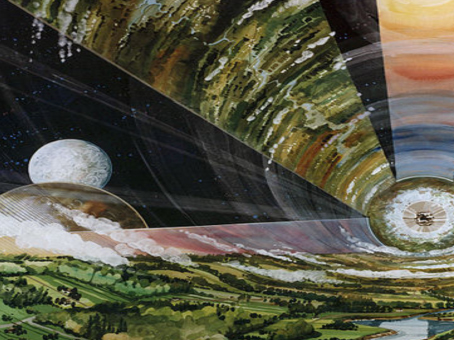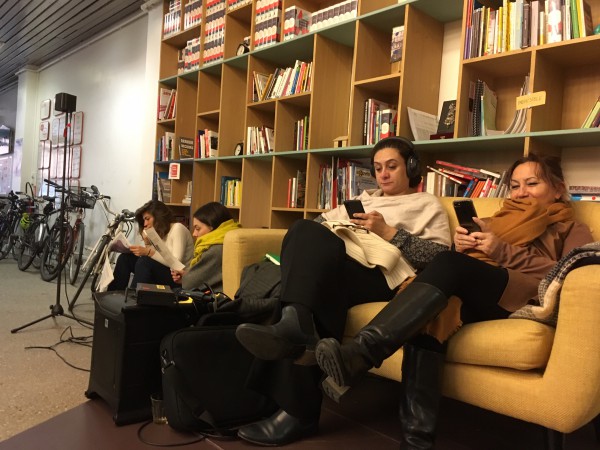Why should we work on imaginaries, especially in times of crisis (democratic, ecological, etc.)? How may imaginaries sustain engagement? What are the imaginations at work today in public innovation labs? How to build new narratives for public transformation and create spaces for dialogue and disruption ?
On January 30, there was thirty * of us gathered at Superpublic, as part of the Post Transfo program to explore together the power of imaginaries.
Imaginaries, an engine for action … and a tool for innovation

Daniel Kaplan, co-founder of the Plurality University opens the ball with a rich and clear presentation of the meaning and functions of imaginary. Whether collective or individual, artistic or anthropological, the imagination “comes from minds and has a founding dimension, it filters our perceptions and nourishes our representations of the world“. The imaginary therefore plays a very concrete role in the way we act (or do not act). Daniel tells in particular how the FING’s “Transition squared” program revealed the gap between two communities with very different imaginaries: digital (and technological) transition on the one hand, ecological transition on the other hand, for which the words do not have the same meaning (which, necessarily, does not facilitate the conversation!). For the first ones, man must exceed the limits, for the second he must integrate them; their respective and opposite breaking points are post-humanity and collapse.
Daniel then looked at the relationship between imaginary and innovation, pointing to two useful functions of imaginary: to facilitate invention, by imagining devices that make other worlds possible (the flip phone was already in Star Trek!); to facilitate the acceptance of innovation, by installing it in stories that make it familiar to us. With a fascinating insight into the impossible as a source of innovation, through the example of interstellar travel. As it is impossible on the scale of a human life, it invites us to think about other forms of spaceships than those that we see in fiction, with public spaces and not only control rooms, to allow people to live there for hundreds of years …
We need new stories!

First, let’s clarify the distinction between narratives and storytelling. Narratives amalgamate elements of an imaginary, make them hold together in a coherent manner ; storytelling consists in formatting a specific proposition so it is accessible and attractive to a particular target. It thus gives the narration a purely utilitarian function, without renewing the imaginary. On the contrary, narratives and imaginaries feed on each other.
This is a widely shared observation: Western “great narratives” (narrative of progress, religious narrative, Marxist narrative, etc.) have collapsed since the 1960s and 70s, leaving behind a feeling of lack of landmarks and destinations. Even if they are no longer unifying “big narratives”, because our societies are more complex and less polarized than before, we need new narratives for many reasons: to be able to imagine the unthinkable, to set our spirits in motion (what do we do when we give up the mystique of growth? how to tell it?), to give meaning to what seems to have none, to give a voice to those who seem to have none (women, non-Westerners, etc.), to reopen public space by offering spaces in which it will be easier for antagonistic worlds (for example unionists and employers) to interract and to project themselves into shared worlds without being accused of collusion with the “enemy”. Today, public stakeholders are struggling to produce these new narratives. For Daniel Kaplan, if territorial foresight is vary good at addressing slow evolutions, within our usualway of thinking, it lacks an ability to think about disruption-type ruptures and to integrate and clarify imaginaries.
To follow up with this inspiring introduction and show the diversity of narrative forms and their generative force, we had cooked up a sequence of reading, listening or viewing of one or more stories which seemed inspiring to us (if you are interested, you can find our selection here).

So, how to build a narrative?
There is of course no unique and magical recipe, but we can offer some inspiring examples: Bright mirror and its short format of collective production of positive stories starting from a sentence; the Negotiation Theater, a preenactment exercise initiated by Bruno Latour during the COP21 in Paris; Work + of the University of Plurality, which has been collecting since 2018 fictional and artistic “fragments” to explore the future of work in a different way; The Weight of light published by the Center for Science and the Imagination at the University of Arizona which brought together science fiction authors, illustrators and designers to create short stories about a 100% solar Arizona in 2045, then commented by experts in climatology, aerospace engineering, but also ethics or political science.
One thing is for sure: everyone is fed by imaginaries, whether we recognize them or not, whether we activate them or not. It was also the subject of a small exercise offered to the participants at the end of the morning, aimed at making them aware of the part of imagination at work in their work by answering two questions: what works – literary, cinematographic, musical, plastic … – inspired you or stands out in your childhood or your adult life? How is your work, your action linked to this?
To make our friends from innovation labs feel of to build a narrative, we had designed a practical, unpretentious exercise, without any operational objective. From a territory and a complex problem brought by our Post Transfo colleagues (“Metz is experiencing an increasing exodus of its workers towards Luxembourg”; “Rennes must absorb 50,000 new inhabitants in 10 years “;” Paris empties of its families “;” Grenoble overheats in summer “), each group had to write and / or draw a draft scenario and two or three “scenes” narrating successful transformations, radical by their nature or approach, and in which the public innovation lab plays a role…
“Imagining is doing”
At the end of the day, many expressed the need that the labs take hold of imagination to (re) assert their radicalism and their goal to re-enchant the world, and give a more political dimension to their action, including helping elected officials to build a mobilizing narrative for their territory. Whether they are tools to investigate, to understand the world, to anticipate the future or to enlist, labs must better integrate narratives. Because “Imagining is doing”, as the ideas nourish the stories, which in turn nourish the ideas …
* the participants came from the cities and metropoles of Dunkirk, Grenoble, Lille, Metz, Nantes, Plaine Commune, Paris, Rennes, Strasbourg; the Brittany and Grand Est Regions, the Val d’Oise County, the Interministerial Department for Transformation of public action and La 27e Region. Thank you to everyone!



